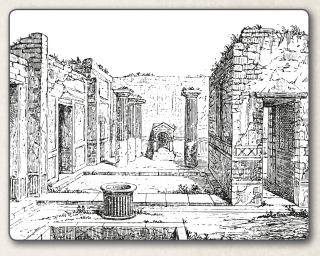Pompeii 2
Mount Vesuvius, which is located on the west coast of Italy, has erupted more than 50 times. It is best known for the volcanic eruption in A.D. 79. The eruption buried the city of Pompeii and the people who used to live there under a volcanic ash carpet. But how did we learn about this event that happened centuries ago? We learned about it from an eye-witness named Pliny, who was 18 years old then. He was staying at a place which is on the northern side of the Bay of Naples. He wrote a letter to his friend, Cornelius Tacitus, explaining what had happened.
In his first letter he stated that his mother had shown him a cloud of unusual size and appearance which looked like an umbrella pine. It went high up in the sky and gradually spread and then ash and black stones started to fall. Sometime later blazing fire and flames were seen. When the lava came out of the crater, it swept everything away on its path.
Since the people had no idea about volcanos at that time, when they first saw the flames and fire, some of them thought that it was bonfire and didn’t bother to run away. Some people thought that the eruption was the wrath of God.
Pompeii was a city where wealthy holidaymakers went to enjoy the sun and landscape. It was also a residential area where rich people lived. There were elegant houses and villas. The estimated population at that time was 20,000, including the surrounding region.
More than two thousand people died and the city was abandoned for a long time after the eruption. It was rediscovered in the 1700s when a group of workmen were digging a well in Ercolano (used to be known as Herculaneum). They came across the ancient remains of Herculaneum, which was a city close to Vesuvius. Then archeologists started an excavation and in 1748 uncovered the city. They were surprised to see that Pompeii was mostly intact. The ash acted as a preservative, that’s why nearly everything stayed more or less the same. Valuable objects, paintings and statues were taken to museums. The bodies of the victims were reconstructed by the scientists and are exhibited in Pompeii. The excavation in Pompeii hasn’t finished yet as one third of the city still remains buried.
Adapted from history.com

